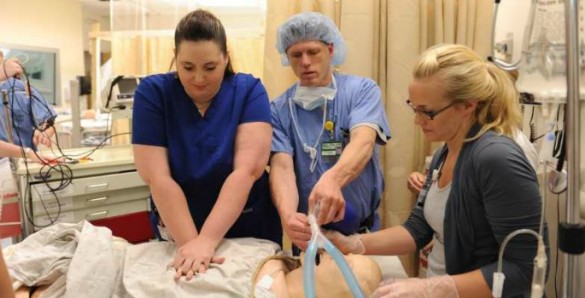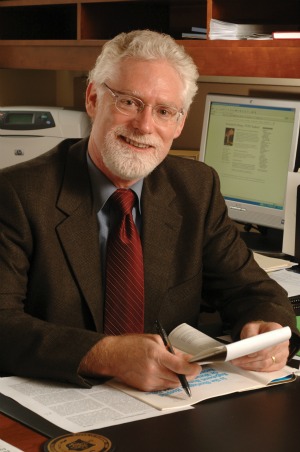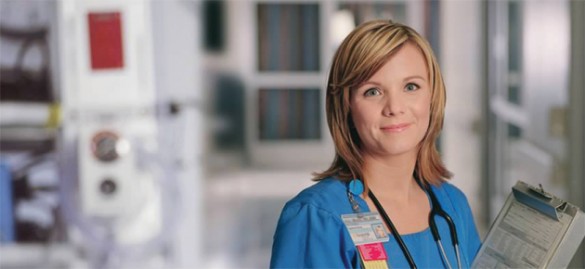
Significantly more young people are becoming registered nurses, reversing a 10-year decline in the number of nurses entering the profession and easing some concerns about a looming nursing shortage in the United States according to a new study released in the December issue of Health Affairs.
Findings show a 62 percent increase in the number of 23- to 26-year-olds who became registered nurses between 2002 and 2009, a growth rate not seen in this age group since the 1970s, according to the research team of RAND Corporation health economist David Auerbach, Vanderbilt University School of Nursing’s Peter Buerhaus and Dartmouth College professor of economics Doug Staiger.
Rather than a steady decline as previously projected, the nurse workforce is now expected to grow at roughly the same rate as the population through 2030.
In addition, more people are becoming nurses in their late 20s or early 30s, spurred by two-year associate degree programs and accelerated nursing degrees targeted to those in other fields. The recession and the decline in manufacturing jobs also have triggered interest in nursing since health care is one of a handful of industries that is continuing to grow and hire.

“We may have reached a tipping point in the nursing shortage in the sense that we now, for the first time in more than a decade of research, are projecting growth in the total size of the registered nurse workforce, ” said Buerhaus. “These early signs are positive, but we need to continually grow the supply of nurses to effectively match the expected growth in demand over the coming years.”
According to the study, there were 165,000 registered nurses between the ages of 23 and 26 in the workforce in 2009, up sharply from a low of 102,000 in 2002. The data show that declining entry among young registered nurses appears to have reversed. If these nurses remain in the profession until they reach middle age, this could be the largest cohort of young nurses to ever enter the field.
“These findings were a real surprise and a very positive development for the future health care workforce in the United States,” said Auerbach. “Compared to where the nursing supply was just a few years ago, the change is just incredible.”
Ten years ago, researchers predicted the United States could face a shortage of 400,000 registered nurses by 2020 due, in large part, to fewer young people entering the profession. There was a dramatic drop in the number of young women becoming registered nurses as they pursued other careers. The average age of working registered nurses increased from 37.4 to nearly 42 years, and experts were concerned there would not be enough replacements for retiring nurses.
The reason for this sharp turnaround is due to a number of factors. Young people have been drawn to nursing because of aggressive national recruitment efforts, such as the $50 million “Campaign for Nursing’s Future” launched by Johnson & Johnson in 2002.
“This campaign was very effective. It really changed the momentum, provided a positive image of nursing and provided information on the opportunities that the profession offers,” said Buerhaus.
Federal funding for nurse workforce development tripled from $80 million in 2001 to $240 million in 2010. While federal support and state workforce development efforts have been expanding, it isn’t clear whether those will continue or how key they will be to sustaining enrollment growth, according to Auerbach and Buerhaus.
Researchers caution that the dynamics of the nursing workforce are more complex than sheer numbers. Another key issue is whether the nursing workforce will be suited for population needs. Two recent reports from the Institute of Medicine noted a strong need for registered nurses trained in geriatrics and who can work in ambulatory settings where most patients receive care.
“[lquote]It is great to have the quantity, but if we don’t educate nurses for the positions that the health care delivery system requires, then this is a problem that needs to be addressed,” says Buerhaus. [/lquote]
The research team investigated recent employment trends in the number and age of registered nurses based on more than 35 years of annual survey data from the Census Bureau’s Current Population Survey and the American Community Survey
Support for the study was provided by the Gordon and Betty Moore Foundation.
Vanderbilt University School of Nursing is ranked by U.S. News and World Report as one of the top 20 schools of Nursing in the country. The School is committed to academic excellence and innovation in nursing education; clinical research, patient care, and advance practiced delivery systems for nurses and the entire health care workforce. More information about the school is available online.














